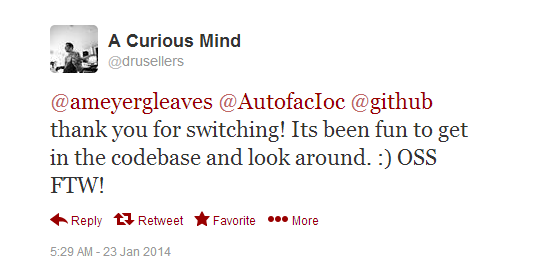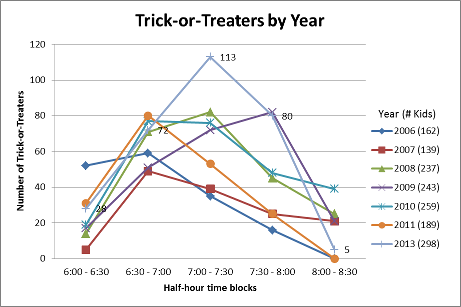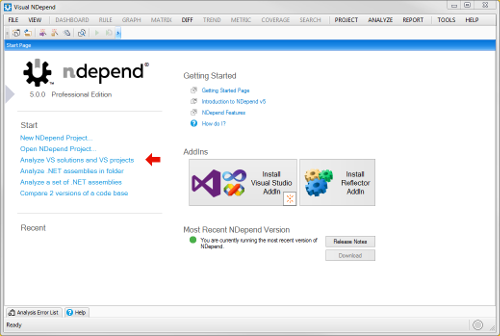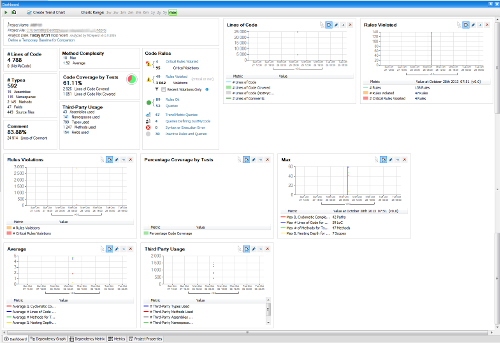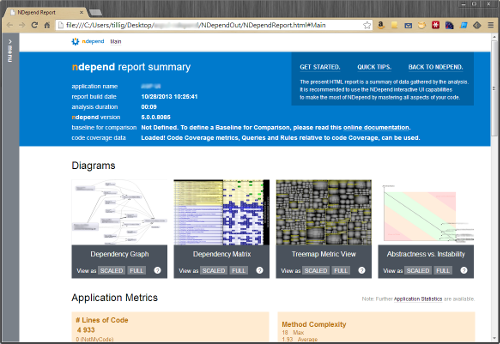Why is Source Control Such a Barrier?
Yesterday we moved Autofac over to GitHub.
I’m cool with that. There’s a lot of momentum behind Git and GitHub in the source control community and I understand that. Nick Blumhardt’s post on the Autofac forum and the linked Eric Raymond post in the Emacs developer list hit close to home for me – I wish Mercurial had “won,” but Git’s fine, too. I don’t feel super strongly about it.*
In moving, we got a lot of really nice and supportive tweets and posts and it’s been a nice welcoming party. That’s cool.
Then there have been some puzzling ones, though, and here’s where I switch out of my “Autofac project coordinator person” hat and into my “I’m just a dev” hat:
Again, I’m not picking on these folks personally, because I respect them and their skills. I’ve seen a few of these and I know (hope?) they won’t take it personally that I grabbed theirs out of the bunch. What I want to address is more my puzzlement around the sentiment I see here:
Why is source control, or a particular source control system, such a barrier?
In a world where the polyglot programmer is becoming more the norm than the exception; where it’s pretty common that a single developer can work in more than one environment, on more than one OS, and/or in more than one language… I have a difficult time understanding why version control systems don’t also fit into that bucket.
I get that folks might have a personal preference. I’m a Sublime Text guy, not Notepad++. I’m a CodeRush guy, not ReSharper. That’s not to say I can’t use those other tools, just that I have a preference and I’m more productive when using my preference.
When I see something like “It’s been fun to get in the codebase and look around,” though, and the [implied] reason that was somehow possible now when it wasn’t before is because of a switch from Mercurial/Google Code to Git/GitHub?
That doesn’t make sense to me.
When I see a project that sparks my interest and makes me think I could make use of it, I don’t really care what version control system they use.** There’s a bit of a “when in Rome” for me there. I mean, honestly, once I pull the NuGet package (or gem, or whatever) down and start using it, and I go to their site to learn more… I don’t really lose interest if they’re hosting their source in some source control system or with a host I don’t prefer. I don’t know of an open source site that doesn’t let you browse the source through a web interface anymore, so even if I wanted to dig into the code a little, it’s not like I have to install any new tools. The “issues” systems on most open source hosting sites are roughly the same, too, so there’s no trouble if I want to file a defect or enhancement request.
Sure, there are some things about GitHub that make certain aspects of open source easier, but it’s primarily around contribution. I concede that pull requests are nice – I’ve made a few, and I’ve taken a few.*** That said, there are some well established conventions around things like patch files (remember those, kids?) that have worked for a long time.
Having a different mechanism of contribution has also never really stopped me. Have you let it stop you? Why?
I guess I look at these other systems more as an opportunity to learn than as a barrier. Just like I have to learn about your coding conventions in your project, your project’s style, the right way to fix the issue I found (or add the enhancement) before I can contribute, the version control may be one of those things, too. It’s not really that big of a deal, especially considering there’s really only Mercurial, Git, and Subversion out there in the open source world and you’ve covered the 99% case.
Don’t get me wrong. I think removing friction is great. Making easy jobs easy and hard jobs possible is awesome. GitHub has been great at that, and I applaud them for it. I just don’t think folks should let source control be a barrier. Add the skills to your portfolio. Sharpen the saw. Have a preference, but don’t let it shackle you.
* All that said, I can’t remember a time when I had more trouble with trivial crap like line endings with any source control system other than Git. And until fairly recently, setting up a decent, working Git environment in Windows (where I spend most of my time) wasn’t as straightforward as all that. Obviously my experiences may differ from yours.
** Except TFS version control. Anything beyond even the simplest operations is a ridiculous pain. “Workspaces?” Really? Still? It’s VSS with “big boy” pants.
*** And, as we all know, pull requests aren’t Git, they’re GitHub (or the host) because they’re workflow items, not source control specific. BitBucket has pull requests for Mercurial.
